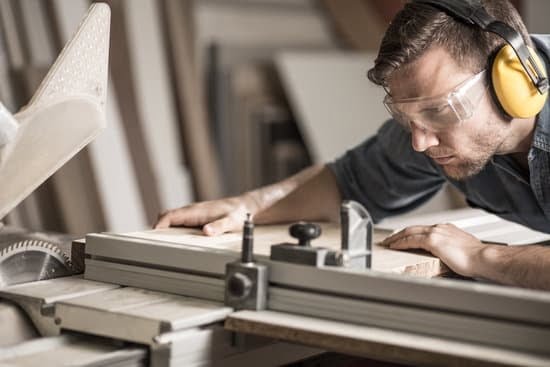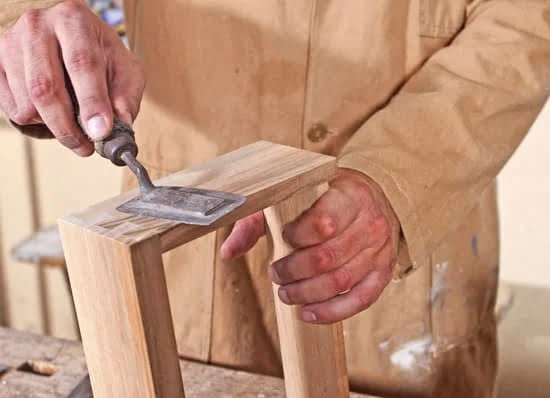Are you wondering, “How many clamps do I need for woodworking?” Clamps are an essential tool in woodworking, playing a crucial role in holding pieces of wood together firmly and securely during the assembly process.
Without the use of clamps, it can be challenging to achieve precise and accurate results in woodworking projects. In this article, we will delve into the various aspects of using clamps in woodworking, including the types of clamps commonly used, factors to consider when determining the number of clamps needed for a project, and tips for maximizing their efficiency.
The importance of clamps in woodworking cannot be overstated. They are necessary for holding wood pieces together while glue dries, ensuring that joints are tight and strong. Additionally, clamps help to prevent warping or shifting during the assembly process, resulting in well-crafted and durable woodwork. By understanding the significance of clamps in woodworking, individuals can make informed decisions about the number and type of clamps needed for their projects.
When determining how many clamps are needed for a woodworking project, several factors come into play. These include the size and weight of the pieces being worked on, the type of joints being made, as well as specific project requirements. In the following sections, we will explore these factors in detail and provide a general rule of thumb for calculating the number of clamps required based on these considerations.
Types of Clamps Commonly Used in Woodworking
Woodworking requires the use of various types of clamps to secure workpieces, apply pressure during glue-ups, and provide support for joints as they dry. Understanding the different types of clamps commonly used in woodworking is essential for determining how many clamps are needed for a particular project.
Bar Clamps
Bar clamps are versatile and come in various lengths, making them suitable for a wide range of projects. They feature sliding heads that can be adjusted along the bar to accommodate different workpiece sizes. Bar clamps are ideal for applying even pressure across large surfaces, such as table tops and panels.
C-Clamps
C-clamps, also known as G-clamps, consist of a fixed “C” – shaped frame with a screw mechanism that can be tightened to hold the workpiece in place. They are commonly used for securing joints during assembly or for holding pieces together while fastening hardware.
Spring Clamps
Spring clamps are compact and lightweight, featuring pivoting jaws that close when squeezed. While they may not provide as much pressure as other types of clamps, spring clamps are convenient for holding small or delicate workpieces in place.
Considering the specific requirements of your woodworking project will help determine which types of clamps are necessary to achieve the desired results. Additionally, having a variety of clamp types on hand will ensure that you have the right tool for any task within your woodworking projects. When asking yourself “how many clamps do I need for woodworking?” it’s important to take into account both the type and quantity needed for each specific project.
Factors to Consider When Determining the Number of Clamps Needed for a Project
When determining the number of clamps needed for a woodworking project, there are several factors to consider. It is important to assess the size and complexity of the project, as well as the type of wood being used. Additionally, the need for different types of clamps based on the specific tasks involved in the project should be taken into account.
Factors to consider when determining how many clamps are needed for a woodworking project:
- The size and complexity of the project: Larger and more complex projects generally require more clamps to ensure that all pieces are securely held together during assembly.
- Type of wood: Softer woods may require fewer clamps than harder woods due to their ability to bend and flex under pressure.
- Different types of clamping tasks: Different steps in a woodworking project, such as edge gluing, panel glue-ups, or intricate joinery, may call for specific types of clamps-each with its own requirements for quantity.
It is essential to keep these factors in mind when planning out a project and determining how many clamps are necessary. By carefully considering these aspects, woodworkers can ensure they have the appropriate number and types of clamps on hand to achieve successful results in their projects.
The General Rule of Thumb for Calculating the Number of Clamps Required
When embarking on a woodworking project, understanding the importance of clamps is crucial to achieving the desired results. Clamps are essential tools that help hold wood pieces together firmly while glue dries, ensuring a strong and secure bond. Without the appropriate number of clamps, a woodworking project runs the risk of yielding subpar results and compromising its structural integrity.
Several factors come into play when determining how many clamps are needed for a woodworking project. The size of the project, the type of wood being used, and the specific joinery techniques being employed all influence the number of clamps required. Additionally, considering the drying time of the glue being used is vital in determining how long each clamp will be occupied and how many additional clamps may be needed for other aspects of the project.
As a general rule of thumb, it is recommended to have at least four to six clamps for every square foot of wood surface being glued together. This guideline provides sufficient pressure distribution across the entire surface, ensuring an even and strong bond. However, it is important to consider any unique aspects or challenges presented by each individual project that might necessitate more clamps than this standard recommendation.
Specific Examples of Woodworking Projects and the Corresponding Number of Clamps Needed
When undertaking a woodworking project, the number of clamps needed can vary depending on the size and complexity of the project. Here are some specific examples of woodworking projects and the corresponding number of clamps needed to ensure a successful outcome.
Small Projects
For small woodworking projects such as making picture frames, jewelry boxes, or small shelves, you may only need a few clamps. Typically, 2-4 clamps of varying sizes should suffice for these types of projects. Using a combination of bar clamps and spring clamps can provide the versatility needed to secure pieces in place during assembly.
Medium-Sized Projects
For medium-sized projects like building a coffee table, end table, or bookshelf, you will likely need a moderate number of clamps. Plan on having around 6-10 clamps in different sizes to accommodate the various parts being assembled. Parallel jaw clamps are especially useful for these types of projects due to their ability to apply even pressure along the entire length of the workpiece.
Large Projects
When tackling large-scale woodworking projects such as constructing a dining table, bed frame, or cabinet, you’ll need a significant number of clamps to ensure proper alignment and glue-up. Depending on the size and complexity of the project, it’s not uncommon to require 12-20 (or more) clamps. In addition to bar and parallel jaw clamps, pipe clamps are often used for larger projects due to their extended reach and adjustable sizing.
By considering the scope and scale of your woodworking project, you can determine how many clamps are needed for successful assembly and ensure that each piece is securely held in place during glue-up and drying.
Common Mistakes to Avoid When Choosing the Number of Clamps for a Woodworking Project
When starting a woodworking project, one common mistake to avoid is underestimating the number of clamps needed. This can lead to frustration and inefficiency during the assembly process. It’s important to understand that having an adequate number of clamps can make a significant difference in achieving quality results.
A key factor to consider is the size and complexity of the project. Larger or more intricate projects typically require more clamps to hold everything together securely while the glue dries. Additionally, certain types of wood, such as hardwoods, may require more clamping pressure than softer woods.
Another mistake to avoid is not taking into account any specific requirements or recommendations from woodworking plans or tutorials. These resources often provide valuable insights into the ideal number and types of clamps needed for a particular project. Ignoring these guidelines can result in subpar outcomes and wasted materials.
Furthermore, failing to consider potential obstacles such as irregular shapes or angles within the project can lead to a miscalculation of clamp requirements. It’s essential to carefully assess the individual components of the project and determine how many clamps will be needed for each section in order to ensure a successful assembly process.
| Common Mistakes | Recommendations |
|---|---|
| Underestimating the number of clamps needed | Understanding size and complexity of project; following woodworking plans or tutorials |
| Ignoring specific requirements from woodworking plans | Consider individual components; anticipate obstacles in assembly process |
Tips for Maximizing the Efficiency and Effectiveness of Clamps in Woodworking
Woodworking clamps are essential tools for any woodworking project. They play a crucial role in holding pieces of wood together while adhesive or fasteners set, ensuring that the finished product is sturdy and well-constructed. To maximize the efficiency and effectiveness of clamps in woodworking, there are several tips that woodworkers should keep in mind.
First, it is important to choose the right type of clamp for the specific task at hand. Different clamps have different strengths and weaknesses, so selecting the appropriate clamp for the job is vital. For example, bar clamps are excellent for long, straight-edged projects, while C-clamps are better suited for smaller-scale tasks. Additionally, pipe clamps are ideal for heavy-duty projects due to their high clamping pressure.
Another tip to consider is to properly distribute the clamping pressure across the entire workpiece. Uneven pressure can result in warping or misalignment of the wood, leading to subpar results. Using multiple clamps and applying pressure strategically can help avoid this issue.
Lastly, it is important to maintain and care for your clamps properly. Regular cleaning and lubrication can prolong the lifespan of your clamps and ensure that they continue to function effectively over time.
| Types of Clamps | Strengths | Weaknesses |
|---|---|---|
| Bar Clamps | Great for long, straight-edged projects | May be cumbersome for smaller tasks |
| C-Clamps | Suited for smaller-scale tasks | Limited by throat depth |
Recommendations for Essential Clamps for a Beginner’s Woodworking Toolkit
In conclusion, the number of clamps needed for woodworking projects can vary depending on the size and complexity of the project. Understanding the importance of clamps in woodworking is essential for achieving precise and sturdy results. Types of clamps commonly used in woodworking include bar clamps, pipe clamps, C-clamps, and spring clamps, each serving a specific purpose in securing wood pieces during cutting, gluing, or assembling.
When determining the number of clamps needed for a project, factors such as the size and thickness of the wood, as well as the type of joints being used must be taken into consideration. The general rule of thumb for calculating the number of clamps required is to use one clamp per foot of length or width. However, specific examples of woodworking projects may require more or fewer clamps based on their unique characteristics.
It’s important to avoid common mistakes when choosing the number of clamps for a woodworking project, such as underestimating or overestimating the amount needed. Additionally, beginners should consider investing in essential clamps for their toolkit such as bar clamps and parallel jaw clamps to maximize efficiency and effectiveness in their woodworking projects.
By following these tips and recommendations, woodworkers can ensure that they have the right amount and types of clamps needed to achieve professional-quality results in their projects.
Frequently Asked Questions
How Far Apart Should Wood Clamps Be?
The distance between wood clamps will depend on the size and shape of the project being worked on. Generally, it’s recommended to space the clamps evenly along the length of the wood, ensuring that there are enough clamps to provide even pressure distribution.
What Clamps Should a Woodworker Have?
A woodworker should have a variety of clamps in their arsenal, including bar clamps, pipe clamps, spring clamps, hand screw clamps, and C-clamps. Each type of clamp serves a different purpose and having a selection available can make woodworking projects much easier and more efficient.
How Many Panel Clamps Do I Need?
The number of panel clamps needed will depend on the size and quantity of panels being worked with. In general, it’s best to have enough panel clamps to evenly distribute pressure across the entire surface of each panel. This may require several panel clamps for larger projects or fewer for smaller ones.

Hi everyone! I’m a woodworker and blogger, and this is my woodworking blog. In my blog, I share tips and tricks for woodworkers of all skill levels, as well as project ideas that you can try yourself.





